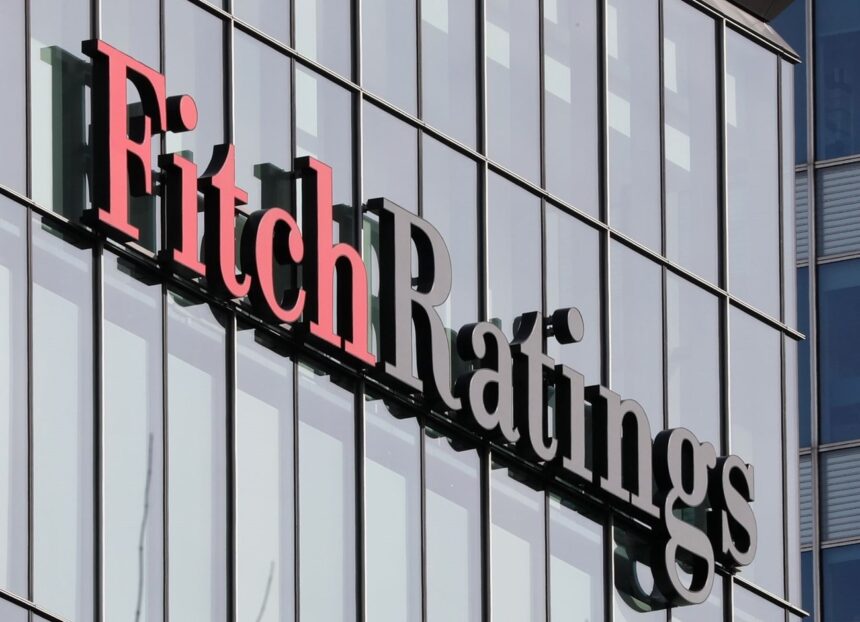Fitch Ratings – Hong Kong – 24 Jun 2025: FitchRatings has affirmed the United Arab Emirates’ Long-Term Foreign-Currency Issuer Default Rating (IDR) at ‘AA-‘ with a Stable Outlook.
Key Rating Drivers
Rating Strengths and Weaknesses: The ‘AA-‘ rating reflects the UAE’s moderate consolidated government debt, strong net external asset position and high GDP per capita. This benefits from Abu Dhabi’s (AA/Stable) sovereign net foreign assets (157% of UAE GDP in 2024), which are among the highest of Fitch-rated sovereigns. These strengths are balanced by weak governance indicators relative to rating peers, the UAE’s high dependence on hydrocarbon income and the significant leverage of government-related entities (GREs).
The ‘AA-‘ rating applies to the federal government (FG) of the UAE. Fitch evaluates the creditworthiness of the UAE FG based on the consolidated fiscal and external position of all the emirates, as is standard practice for federal entities, and the FG’s standalone fiscal position and institutional set-up.
High Geopolitical Risks: Regional geopolitical risks are high and the current escalation cycle is highly uncertain. Fitch assumes the military conflict between Israel and the US on one side, and Iran will remain contained to those belligerents and will not persist for more than a few weeks. A regional conflagration would pose a risk to Abu Dhabi’s hydrocarbon infrastructure and to Dubai as a trade, tourism and financial hub. Gulf maritime trade is a vital interest of the UAE. We estimate the UAE’s ratings could absorb some short-term disruptions given large fiscal and external buffers.
Budget Surpluses: We estimate the consolidated budget remained in surplus in 2024 at 7.1% of GDP after 8.6% in 2023, with surpluses in Abu Dhabi and Dubai and budget deficits in Ras Al Khaimah (A+/Stable) and Sharjah (not rated).
Low Fiscal Breakeven Oil Price: We project a UAE fiscal breakeven oil price of USD45-50/bbl in 2025 and 2026 excluding investment income, partly reflecting rising oil production volumes and the significant share of spending by GREs. We forecast the consolidated surplus at 5.3% of GDP in 2025 and 5.9% in 2026. Narrower deficits in Sharjah and higher oil production levels in Abu Dhabi will mitigate the forecast drop in oil prices from USD79.5 per barrel in 2024 to USD65/bbl in 2025 and 2026. Dubai will retain a budget surplus.
Small FG: The FG’s budget is small, with revenues and expenditure under 4% of GDP. Its remit is centred on the provision of essential public services such as infrastructure, health, education and police. The FG is required by law to balance its current budget and has a record of broadly balancing the overall budget with intra-year adjustments of spending and contributions from emirates to adjust to shocks. Revenues and outlays are relatively stable, but it has limited fiscal flexibility, given its small revenue base and limits on running deficits and issuing debt. The FG will receive a share of corporate income tax proceeds from 2026, which will be offset by lower grants from Abu Dhabi.
Moderate Consolidated Government Debt: We estimate consolidated UAE government debt at 24.9% of GDP at end-2024, well below the ‘AA’ category median of 48%. It will rise slightly to 25.4% in 2025 and 2026. Individual emirates have varied debt profiles, with Sharjah standing out with a higher debt burden. We project Abu Dhabi’s debt to increase as it starts issuing in local currency, Sharjah to borrow to fund deficits, the FG to build the yield curve while Dubai debt will continue to edge down.
In the event of lower oil prices, we expect Abu Dhabi would initially choose to increase borrowing over large drawdowns from Abu Dhabi Investment Authority, although the emirate has internal caps on borrowing.
Federal Debt Issuances Continue: The FG’s debt was 3.5% GDP in 2024; external was USD10 billion. The FG started issuing local-currency debt in 2022 and aims to bring the total outstanding to about AED45 billion over the years, with the objective of building a domestic-currency yield curve rather than funding deficits or projects. The proceeds are invested in highly rated international government bonds, mostly US Treasuries, with matching maturities. The authorities switched from issuing T-bonds to T-sukuk during 2023.
High Economy-Wide Leverage: Fitch views the UAE as having high leverage in its economy, despite a moderate government debt/GDP ratio. We estimate overall contingent liabilities from GREs of the emirates and the FG in 2023 at about 62% of UAE 2023 GDP. Based on publicly available data, a large share of state-owned enterprise debt is at healthy entities with little risk, but many do not disclose financial data.
Close Links with Abu Dhabi: We judge that close political and budgetary links, along with the strong influence of Abu Dhabi over the FG budgeting and the essential nature of public services it provides place the FG higher in Abu Dhabi’s support hierarchy than individual emirates, should it be required. Abu Dhabi does not provide an explicit guarantee that would ensure unconditional and timely support to the FG but has significant ex-ante and ongoing controlling power over the FG’s revenue and spending.
Resilient Growth: We project GDP to rise by 5.2% in 2025, buoyed by a 9% rise in oil production in Abu Dhabi, close to OPEC+ production quotas. Abu Dhabi’s ADNOC stated it has production capacity of 4.85 million barrels per day, well above our 2025 forecast of 3.18 bpd. We project robust non-oil growth of over 4% in 2025, despite mounting global challenges, reflecting construction, government and GRE investment, and slowing but persistent population growth. Nonetheless, risks are rising given the regional impact of lower oil prices and global growth uncertainties.
ESG – Governance: The UAE has an ESG Relevance Score (RS) of ‘5[+]’ for Political Stability and Rights and for the Rule of Law, Institutional and Regulatory Quality and Control of Corruption. These scores reflect the high weight that the World Bank Governance Indicators (WBGI) have in our proprietary Sovereign Rating Model (SRM). The UAE has a high WBGI ranking at the 70th percentile, reflecting its record of domestic political stability, strong institutional capacity, effective rule of law and a low level of corruption.
RATING SENSITIVITIES
Factors that Could, Individually or Collectively, Lead to Negative Rating Action/Downgrade
– Structural Features: Increased negative spillover of the regional conflict on social stability, hydrocarbon production and transport or the non-oil economy, eroding growth prospects or financial buffers
– Public Finances: A deterioration in Abu Dhabi’s sovereign credit profile
– Public Finances and External Finances: Substantial erosion of the UAE’s external position or the fiscal positions of key emirates, for example, due to a sustained period of low oil prices or a materialisation of contingent liabilities
Factors that Could, Individually or Collectively, Lead to Positive Rating Action/Upgrade
– Public Finances: Increased confidence that Abu Dhabi would provide unconditional support in the event of need, for example, due to a guarantee for the timely service of FG debt
– Public Finances: Further improvement of the UAE’s consolidated balance sheet or increased fiscal flexibility at the FG level
– Structural/Macro: Improvement in structural factors such as a reduction in oil dependence, a strengthening in governance and the economic policy framework, and a reduction in geopolitical risk while maintaining strong fiscal and external balance sheets
Sovereign Rating Model (SRM) and Qualitative Overlay (QO)
Fitch’s proprietary SRM assigns the UAE a score equivalent to a rating of ‘AA’ on the Long-Term Foreign-Currency (LT FC) IDR scale.
Fitch’s sovereign rating committee adjusted the output from the SRM to arrive at the final LT FC IDR by applying its QO, relative to the SRM data and output, as follows:
Fitch applied -1 notch to reflect the UAE’s high reliance on hydrocarbons as a source of fiscal and external revenues relative to peers and elevated geopolitical risks.
Fitch’s SRM is the agency’s proprietary multiple regression rating model that employs 18 variables based on three-year centred averages, including one year of forecasts, to produce a score equivalent to a LT FC IDR. Fitch’s QO is a forward-looking qualitative framework designed to allow for adjustment to the SRM output to assign the final rating, reflecting factors within our criteria that are not fully quantifiable and/or not fully reflected in the SRM.
Country Ceiling
The Country Ceiling for the UAE is ‘AA+’, two notches above its LT FC IDR. This reflects strong constraints and incentives, relative to the IDR, against capital or exchange controls being imposed that would prevent or significantly impede the private sector from converting local currency into foreign currency and transferring the proceeds to non-resident creditors to service debt payments.
Fitch’s Country Ceiling Model produced a starting point uplift of +1 notch above the IDR. Fitch’s rating committee applied a further+1 notch qualitative adjustment to this, under the Near-term Macro-Financial Stability Risks and Exchange Rate Risks pillar, reflecting that the Country Ceiling Model dips to +1 due to dollarisation of deposits passing 30%. The figure has been historically fairly volatile. This may be related to rising US dollar-denominated hydrocarbon export proceeds or the influx of new residents.
External buffers are large and the creation of a UAE dirham yield curve may reduce dollarisation in future. These factors support keeping the Country Ceiling two notches above the IDR.
REFERENCES FOR SUBSTANTIALLY MATERIAL SOURCE CITED AS KEY DRIVER OF RATING
The principal sources of information used in the analysis are described in the Applicable Criteria.
The following limitations were identified and addressed: a) Standard International Investment Position data for the UAE is not available; b) there is no disclosure on the size of Abu Dhabi’s external assets (mostly relating to the ADIA).
a) The main elements of external assets and liabilities are available from emirate sources, creditor sources and the IMF/World Bank/BIS; b) there is a degree of disclosure on the assets’ composition and returns of ADIA’s and Fitch is provided with some guidance on inflows and outflows. Fitch’s estimates of Abu Dhabi’s external assets are derived by compounding estimated government cash surpluses using assumptions about returns and asset allocations.
These mitigants provide us with sufficient confidence in our analysis of the credit profile to maintain or assign the rating.
ESG Considerations
The UAE has an ESG Relevance Score of ‘5[+]’ for Political Stability and Rights as WBGI have the highest weight in Fitch’s SRM and are therefore highly relevant to the rating and a key rating driver with a high weight. As the UAE has a percentile rank above 50 for the respective Governance Indicator, this has a positive impact on the credit profile.
The UAE has an ESG Relevance Score of ‘5[+]’ for Rule of Law, Institutional & Regulatory Quality and Control of Corruption as WBGI have the highest weight in Fitch’s SRM and are therefore highly relevant to the rating and are a key rating driver with a high weight. As the UAE has a percentile rank above 50 for the respective Governance Indicators, this has a positive impact on the credit profile.
The UAE has an ESG Relevance Score of ‘4’ for Human Rights and Political Freedoms as the Voice and Accountability pillar of the WBGI is relevant to the rating and a rating driver. As the UAE has a percentile rank below 50 for the respective Governance Indicator, this has a negative impact on the credit profile.
The UAE has an ESG Relevance Score of ‘4[+]’ for Creditor Rights as willingness to service and repay debt is relevant to the rating and is a rating driver for the UAE, as for all sovereigns. As the UAE has a record of 20+ years without a restructuring of public debt and captured in our SRM variable, this has a positive impact on the credit profile.
Source: Fitch ratings.








